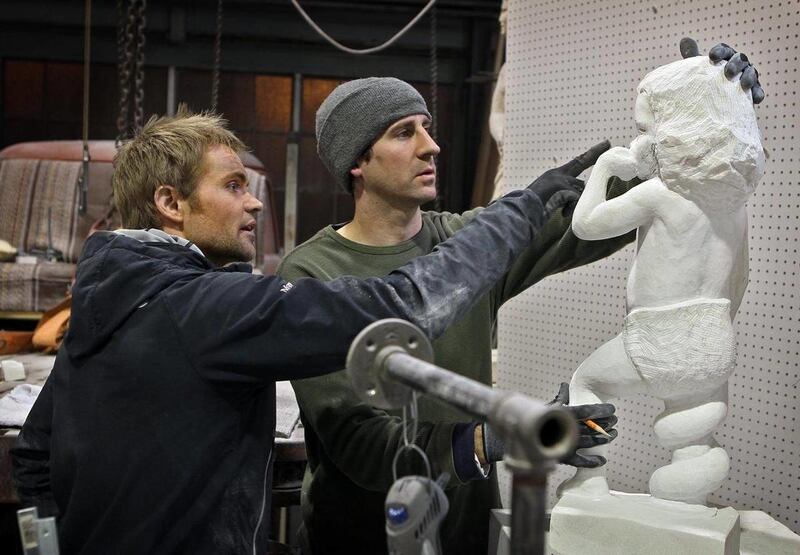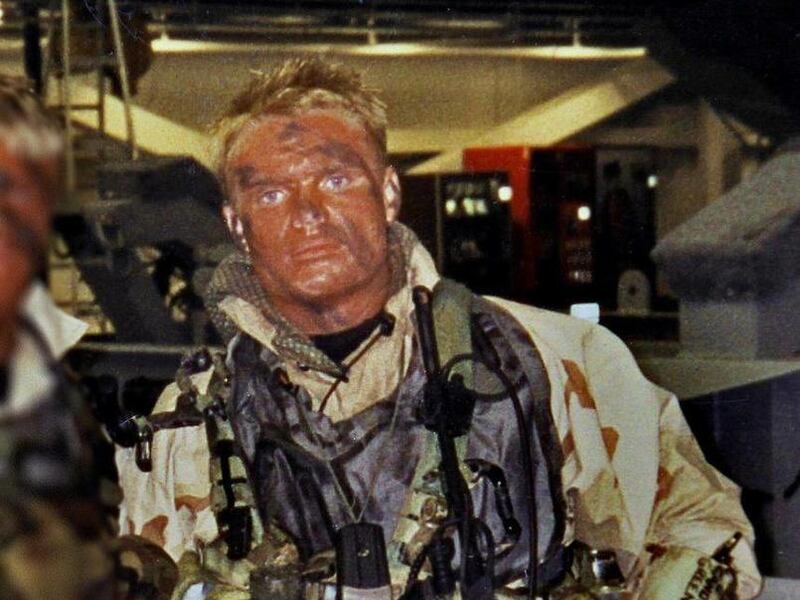ST. LOUIS — Stephen Otten marks up the side of a marble block to remind himself where he'd later begin carving. A statue nearby serves as a guide.
It's an exercise he's doing with his instructor, sculptor Abraham Mohler, to gauge his technical carving skills.
For Otten, the exercise is a memory buffer, keeping at bay images from 12 years in the military that rob him of sleep when they surface.
"When I have time to think, I think about the past," said Otten, 32, of St. Louis.
That past includes years rounding up high-ranking Iraqi officials after the Sept. 11 attacks, training others to kill targets — and doing some killing himself.
So he sculpts.
Mohler's Gravois Avenue art studio has become one of few places Otten doesn't have to relive the nightmares caused by losing friends and students in war, as well as his own wartime deeds.
Mohler said he doesn't mind. He welcomes anyone interested in the type of art he creates. Helping with Otten's rehab is just a bonus.
"To me, it doesn't matter exactly what I'm shaping, whether it's wood, marble or clay, or a person," Mohler said. "I like to be able to do with 'Otter' the same sort of sculpting that I do with the stone. I enjoy the process of working to shape him. He's such raw material to work with."
Otten, whose nickname is Otter, joined the Navy just after high school. He eventually made the ranks of the famous SEALs, the branch's special operations unit.
It was after the Sept. 11 attacks that he got to see what his job was all about. He tells stories of missions that often involved "eliminating" targets.
In later years, while an instructor for the SEALs, he had to deal with the deaths of several students.
"As much as you can say it's not your fault, the questions come up," he said. "Like 'What could I have done to make him better (at his job)?'"
By the time he was discharged in 2008, he was considered 90 percent disabled from injuries he suffered while overseas. He was also diagnosed with post-traumatic stress disorder. Lack of sleep and loss of focus were among his major symptoms.
The art, he says, "gives me peace and keeps away the bad memories."
The type of creating that Otten has taken a liking to is a rare find. Mohler's works of carved marble and chiseled stone are what the artist said would best be grouped as contemporary realism. His pieces open a window to the past, using the craftsmanship ushered in by older artists, while staying representative of more modern influences.
"I try to speak in a language people understand," Mohler said. "Something more compelling than what we see day to day."
The public has been slow to respond. Some academics have all but shunned the work, Mohler said, saying it's stealing from the past.
"Very simply put, you draw what you see," he said. "I'm trying to do the best art that's ever been produced. When I try to evaluate how to do that, I try to look for who exemplifies that the most. Examples of where people have kind of reached the pinnacle of human capability."
Michelangelo, Bernini and Carpeaux — artists who reached their peak well before the 19th century — are among his idols. Mohler said he sees a chance to take from the past and add a more modern spin.
He's trying to find more people interested in the work. He's restoring pieces for clients around the city. He also has his originals — including sculptures and paintings — at the Botanical Garden, Cafe Cioccolato in downtown St. Louis and in local cemeteries.
One collector, he recalls, said Mohler's work was the first he'd seen from an artist who wasn't doing 20th century art.
"And that's what I hope people recognize," he said.
Otten has been around art his entire life. His father is a clay sculptor, his mother an art teacher. They would send him art history books while he was deployed. Once he got home, he bought a ticket to Europe, wanting to see in person what he had been reading about. It inspired his interest in making art of his own.
He began painting, then enrolled in a program at Southwestern Illinois College. He was recently accepted into the art program at Fontbonne University, where he'll begin working on his bachelor's in the fall.
One Wednesday recently, Otten rolled a cart carrying a marble block to Mohler, showing where he had marked up the side of the block to begin carving. Mohler looked at the marks, then at the statue Otten was using for influence.
"You're not going to like this, but I think we need to clean this off and start again," Mohler told Otten, explaining some dimensions of the mark-up were off. Otten, after a little discussion, understood.
Otten stumbled upon Mohler, the sculptor, when looking for marble to carve a piece memorializing a deceased student. The two got along immediately. Both are interested in the same type of art.
Otten has been working with Mohler as an apprentice for about two months. He gets help with developing his style and has a place to keep his models. Mohler gets to mentor, something he's always wanted to do. Otten helps him with projects around the shop.
"When you get a chance to teach these things, they solidify better in your own mind," he said. "I know that it makes me a better sculptor to be able to do that. I get joy out of it. Especially working with someone like Otter. He's just a fascinating person. He's probably the best student I'll ever have. I can't imagine running into someone who would put what he does into (his work)."
In the spring, another veteran may join the fold. The man, whom Mohler said was on active duty and stationed in Afghanistan, has shared tragic stories of loss similar to those Otten experienced. He's not an artist, but Mohler said the other man may work on the public relations side of the business.
It's not exactly what he set out to do with his business, Mohler said, but he's OK with that.
As long as it's helping them. And the art, too.
Information from: St. Louis Post Dispatch, http://www.stltoday.com




